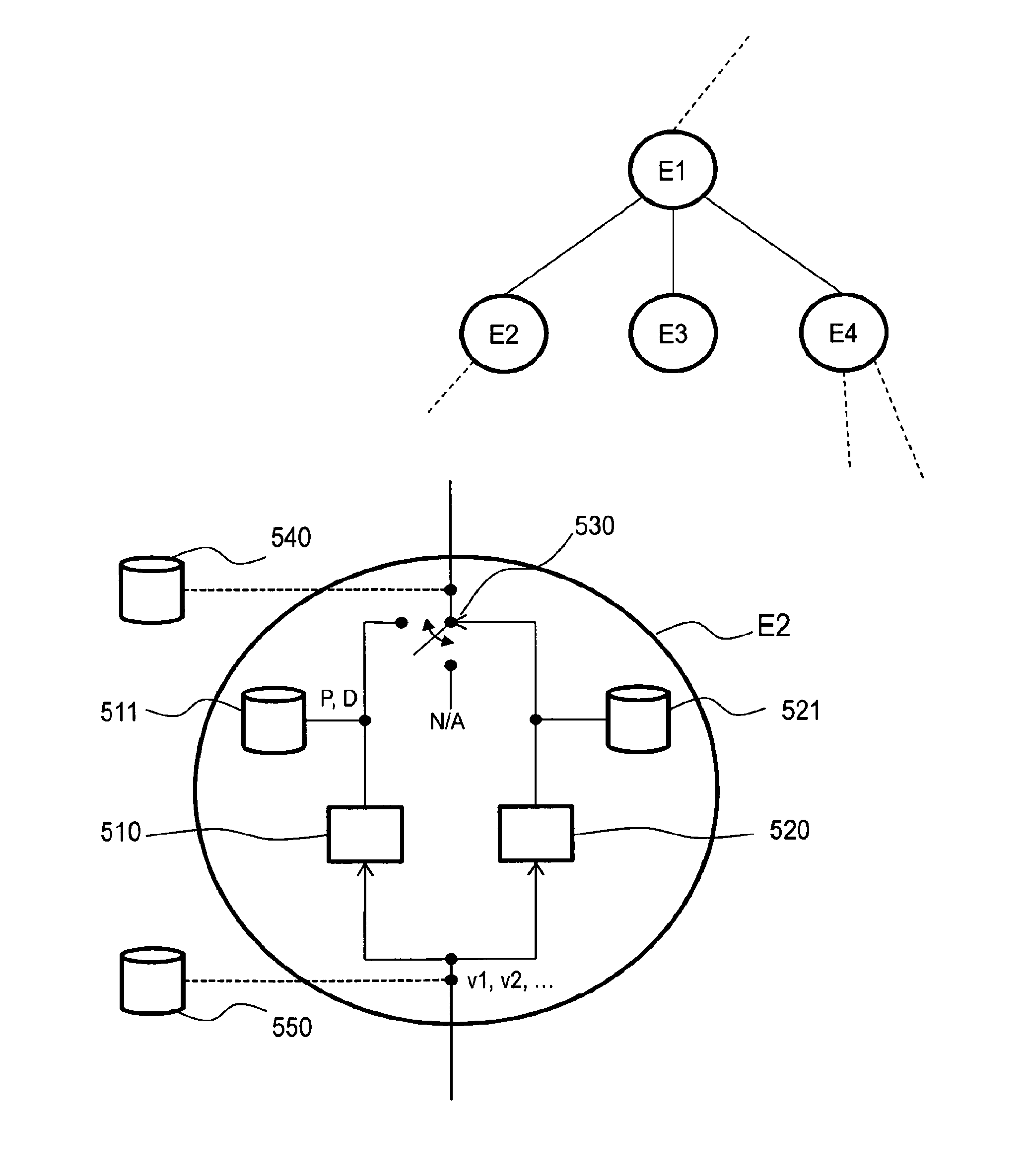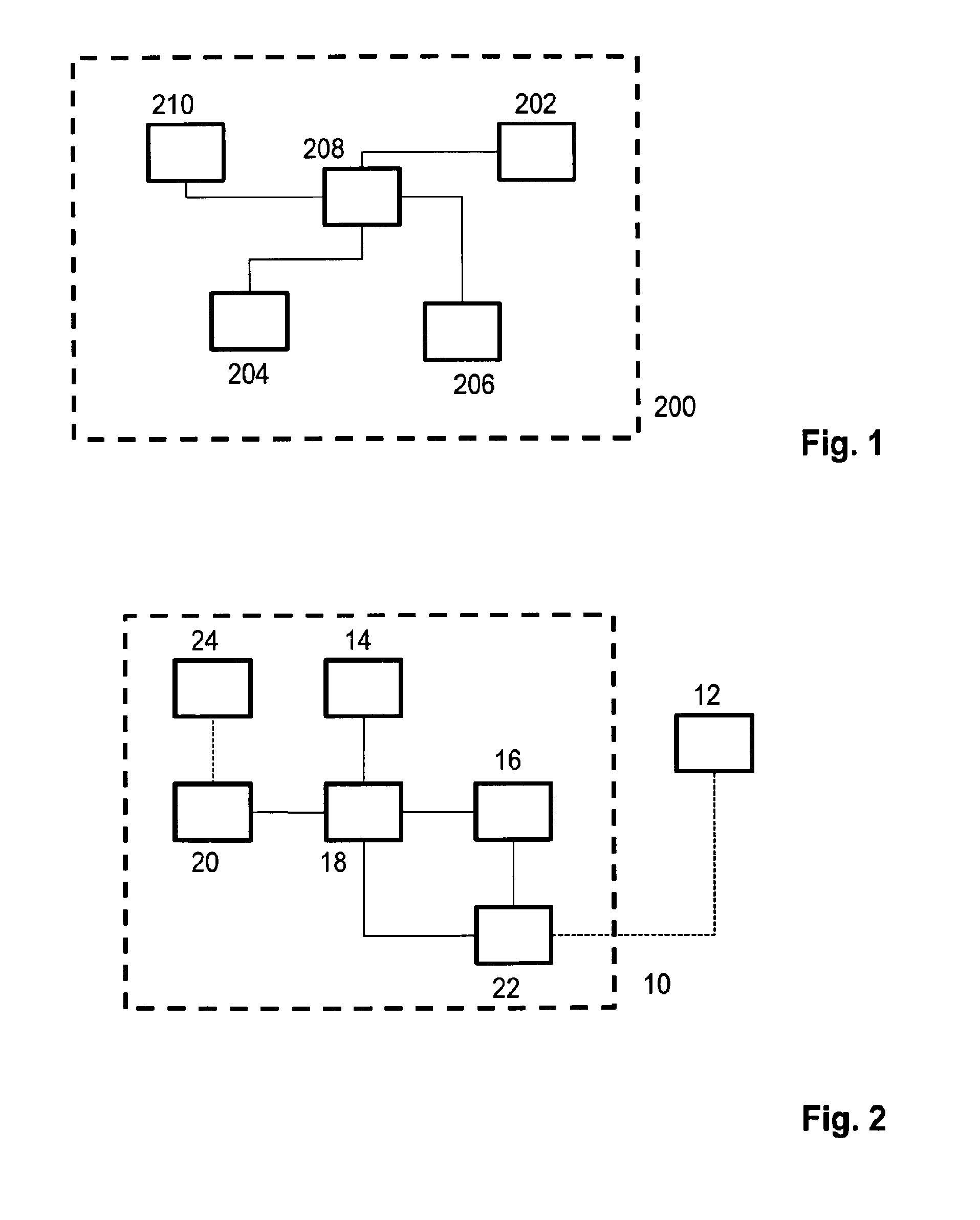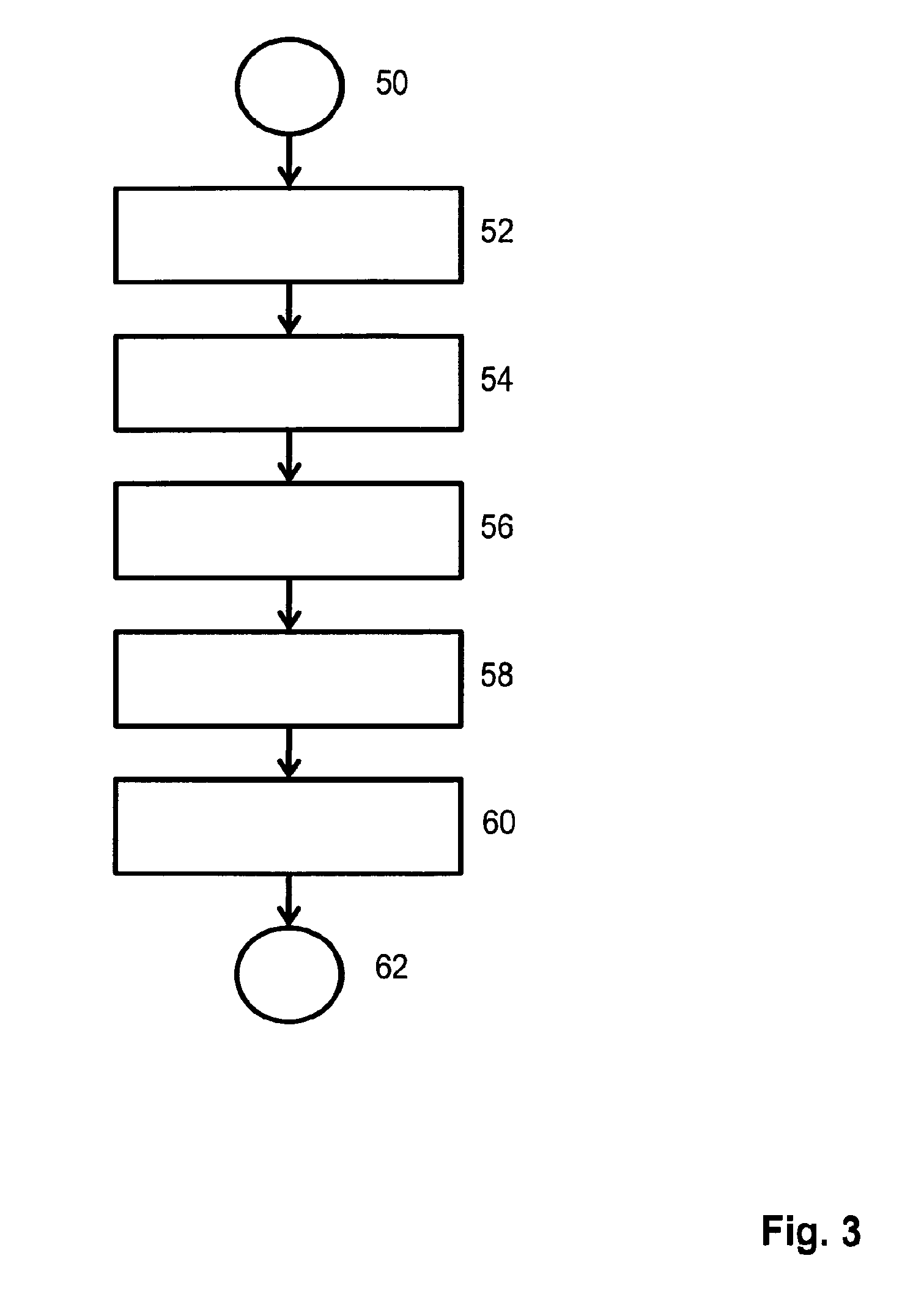System and method for performing partial evaluation in order to construct a simplified policy
a partial evaluation and policy technology, applied in the field of access control, can solve the problems of inapplicability or indeterminate, inability to discard intermediate values, and possible decisions from evaluations
- Summary
- Abstract
- Description
- Claims
- Application Information
AI Technical Summary
Benefits of technology
Problems solved by technology
Method used
Image
Examples
example 1
[0108]To perform partial evaluation of a Boolean AND function, do the following:[0109]1. Declare Boolean variable “GotSimplifiedExpression”, and set it to false[0110]2. Declare a list of arguments, called SimplifiedArgs, to be used if a simplified expression is to be returned as the result of this function. The list starts empty.[0111]3. For each argument of the AND function, evaluate the argument, giving intermediate result R[0112]a. If R is Indeterminate[0113]i. If GotSimplifiedExpression is False, then return Indeterminate for the AND function result[0114]ii. Otherwise save the Indeterminate R as an intermediate result at the end of the list SimplifiedArgs[0115]b. If R is True[0116]i. Continue to the next argument[0117]c. If R is False[0118]i. If GotSimplifiedExpression is False, then return False as the values of the AND function result[0119]ii. Otherwise save the False R as an intermediate result at the end of the list SimplifiedArgs[0120]d. If R is a simplified expression[0121...
example 2
[0127]To perform partial evaluation at the top level of a Target, do the following.[0128]1. Define variable atLeastOneIndeterminate of type MatchResult and set it to null[0129]2. Define a list variable simplifiedTargetElements, which can collect simplified nested target expressions. The list starts as empty.[0130]3. For each nested expression in the Target, evaluate the nested expression, giving a result R of type MatchResult[0131]a. If R is a simplified expression, save R in the list simplifiedTargetElements[0132]b. If R is NoMatch, then return NoMatch[0133]c. If R is Indeterminate, set atLeastOneIndeterminate to R[0134]d. If R is Match, then continue to the next nested expression[0135]4. If atLeastOneIndeterminate is not null, and the list simplifiedTargetElements is empty, return atLeastOneIndeterminate[0136]5. If the list simplifiedTargetElements is empty, return Match[0137]6. If atLeastOneIndeterminate is not null, add atLeastOneIndeterminate to the list simplifiedTargetElement...
example 3
[0139]To perform partial evaluation of a PolicySet or a Policy, do the following.[0140]1. Evaluate the Target, which gives the result T. If there is no Target, then T is “Match”[0141]2. If T is NoMatch, then return NotApplicable[0142]3. If T is Indeterminate, then return Indeterminate[0143]4. Declare variable SimplifiedTarget and set it to null[0144]5. If T is a simplified expression, set SimplifiedTarget to T[0145]6. Perform partial evaluation on the combining algorithm, given the result C[0146]7. If SimplifiedTarget is null[0147]a. If C is a list of simplified nested elements, return a new PolicySet or Policy with no target and the nested elements given by C[0148]b. Otherwise return C[0149]8. Otherwise if SimplifiedTarget is not null[0150]a. If C is a list of simplified nested elements, return a new PolicySet or Policy with SimplifiedTarget as the Target and the nested elements given by C[0151]b. Otherwise return a new PolicySet or Policy with SimplifiedTarget as the Target and a ...
PUM
 Login to View More
Login to View More Abstract
Description
Claims
Application Information
 Login to View More
Login to View More - R&D
- Intellectual Property
- Life Sciences
- Materials
- Tech Scout
- Unparalleled Data Quality
- Higher Quality Content
- 60% Fewer Hallucinations
Browse by: Latest US Patents, China's latest patents, Technical Efficacy Thesaurus, Application Domain, Technology Topic, Popular Technical Reports.
© 2025 PatSnap. All rights reserved.Legal|Privacy policy|Modern Slavery Act Transparency Statement|Sitemap|About US| Contact US: help@patsnap.com



